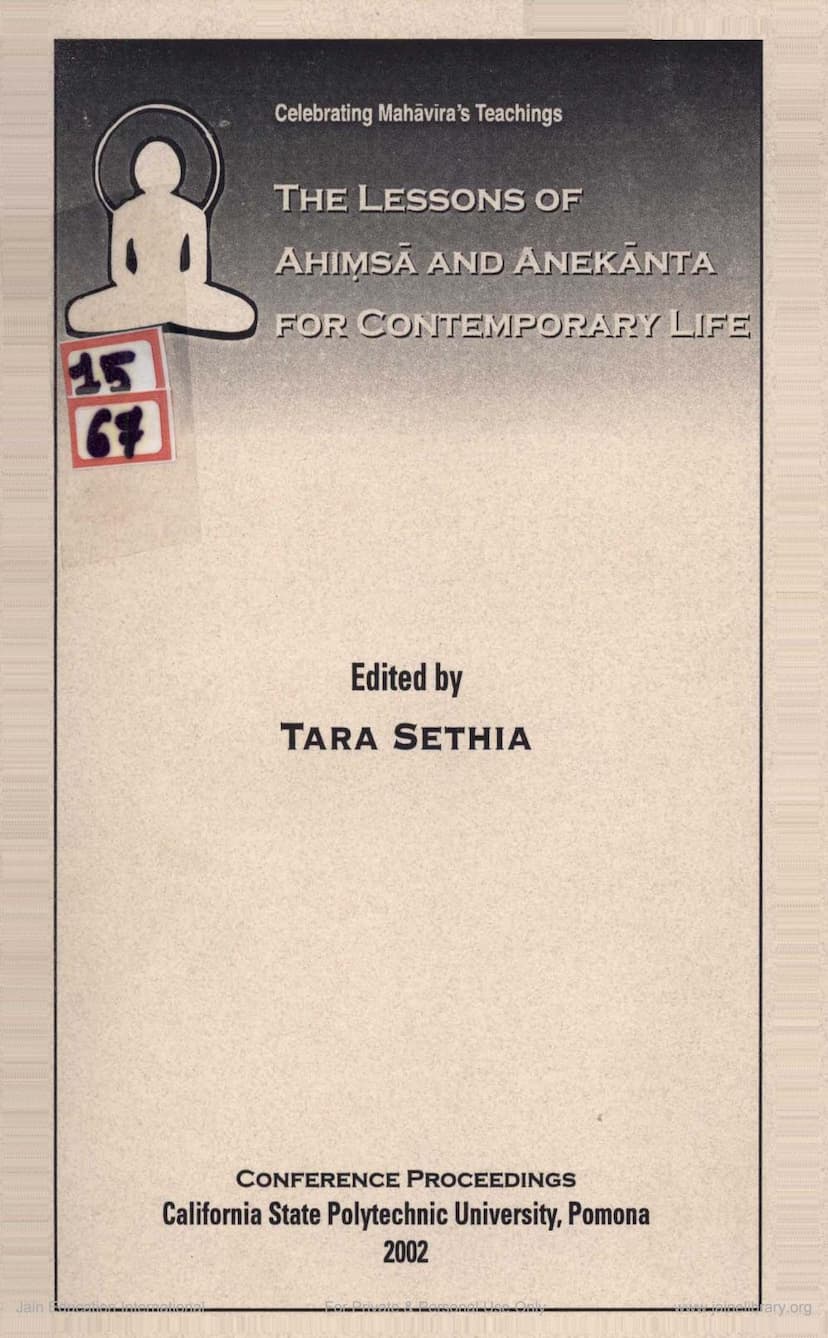Lessons Of Ahimsa And Anekanta For Contemporary Life
Added to library: September 2, 2025

Summary
This book, "Lessons of Ahimsa and Anekanta for Contemporary Life," edited by Tara Sethia, is a collection of proceedings from an international conference held at California State Polytechnic University, Pomona, in 2002. The conference aimed to explore the teachings of Mahāvīra, the twenty-fourth Tirthankara and propagator of Jainism, with a particular focus on the principles of ahimsā (non-violence) and anekānta (many-sidedness of reality). The book features twelve scholarly papers that delve into the relevance and application of these core Jain principles to contemporary global issues.
The introduction, by Tara Sethia, highlights the timeliness of celebrating Mahāvīra's teachings, especially in the wake of the September 11th attacks and the looming threats of war and weapons of mass destruction. It emphasizes how the increasing consciousness of diverse identities can lead to social strife if not balanced with mutual understanding. The book is structured into thematic sections:
-
Ahimsā, its meaning and applicability:
- Kristi Wiley discusses the interconnectedness of ahimsā, compassion, and samyaktva (right view) in Jainism, arguing that Jain ahimsā is rooted in a proper understanding of reality, leading to spiritual progress and social compassion.
- Kim Skoog formulates a Jain response to terrorism, suggesting that while Jainism doesn't have a "just war" theory, its principles of detachment and minimizing harm can guide actions in times of conflict. Lay Jains can participate in war as a last resort with detachment and awareness of its impact.
- Padmanabh S. Jaini examines the concept of "just war" through the lens of ahimsā, emphasizing that violence stems from a lack of compassion. He explains that while lay Jains may engage in violence for survival or occupation, mendicants must practice absolute non-violence. He stresses that death with violent thoughts leads to negative rebirths, contrasting with beliefs about martyrdom.
- Satish Kumar, a former Jain monk, emphasizes that Jainism's contribution to world peace lies in its teaching of silence, controlling speech, and the idea that non-violence begins with oneself – thoughts, language, and actions. He advocates extending personal non-violence to all domains for a peaceful world.
-
Anekānta, its origin and significance:
- Samani Charitrapragya traces the origin of anekāntavāda to Mahāvīra's responses to disciples, explaining that while Mahāvīra didn't use the term, his dialectical approach laid the groundwork. She highlights that anekānta helps reconcile opposing views and fosters tolerance.
- John M. Koller presents a logical argument for anekāntavāda's importance in addressing violence, stating that violence stems from dogmatic knowledge claims. He proposes anekāntavāda as an alternative epistemology that supports dialogue and respects diverse viewpoints, thereby reducing violent arguments.
- Anne Vallely explores anekānta as a way to navigate pluralism without falling into extreme relativism or exclusivism. Her personal experience teaching Christianity to Jain nuns demonstrates how understanding other traditions can be rooted in one's own, suggesting anekānta fosters respect for diversity.
- Kamla Jain discusses the multi-dimensional significance of anekānta in modern social life, linking it to secularism, jurisprudence, business, and even postmodern thought, highlighting its role in promoting tolerance and reducing conflict.
- Paul Dundas examines Jain religious tolerance, noting that while anekāntavāda is often seen as promoting tolerance, it also served to establish the superiority of the Jain worldview. He discusses the tension between inclusivity and exclusivism within Jainism, referencing historical debates and the concept of mādhyasthya (standing in the middle).
- Christopher Key Chapple analyzes the survival of Jainism amidst historical challenges and religious rivalry. He contrasts the historical accounts of violence attributed to Haribhadra with his actual writings, which emphasize tolerance and ahimsā, suggesting these stories might have been allegorical responses to contemporary issues.
- Sonya Quintanilla uses art historical and epigraphical evidence from early Mathura to argue that the Ardhaphālaka Jain monks exemplified ahimsā and anekānta. Their adherence to these principles fostered a tolerant environment, contributing to Mathura's status as a cosmopolitan cultural center.
- Tara Sethia critically reviews Indian history textbooks, finding that the coverage of Mahāvīra and Jainism is often inadequate, superficial, and sometimes misrepresentative, failing to convey the essence of Jain teachings and their historical significance.
The book concludes with the editors and contributors emphasizing the vital role of ahimsā and anekānta in addressing contemporary challenges like terrorism, intolerance, and conflict. The papers collectively advocate for a deeper understanding and practical application of these Jain principles to foster a more peaceful and harmonious world.